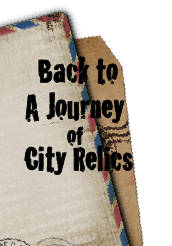
Xing Yan Restaurant, a western-style restaurant located at 2 Lyndhurst Terrance, was another favourite meeting place of the revolutionaries.
The scheming of an uprising was of course a highly confidential matter — it was deemed dangerous and sensitive even to the colonial government, as the Qing territory was just next door. Mr. Sun and his compatriots must do it without alerting the Hong Kong police. The job was made even harder as the colonial government imposed a blackout in Hong Kong, following the curfew order mandated when the city was first opened.
As stipulated, all Chinese had to remain indoors from 8:00pm to 6:00am, except for holders of "late night permit" (commonly known as "street permit") issued by the Police. But even permit holders had to carry a lantern at night. It is not difficult to imagine how stealthy the revolutionaries had to be in planning the uprising.
The failure of the Guangzhou Uprising had not deterred the revolutionaries from their course. Quietly, they came back to Hong Kong and raised the flag again. Yau Lit, for example, returned in 1897 and set up "Chung Wo Tong", which was backed by the triads. He then travelled to Yokohama to rendezvous with Mr. Sun. Yeung Kui-wan, too, wended his way to Yokohama in 1898, where he turned over his presidency of the Revive China Society to Mr. Sun and set out to plot the Huizhou Uprising, which happened in 1900, in Hong Kong. Cheng Si-leung and Chan Siu-bak also sneaked back to the city, prepared for another move. All this time Mr. Sun was lobbying for support and raising fund for the revolution from around the world. He was looked up to as the commander in chief of the revolution, especially after the "London-kidnap" in 1896, as a result of which he became the symbol of Chinese revolution in the eyes of western media and politicians.